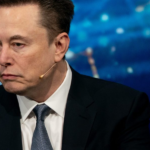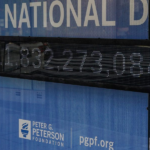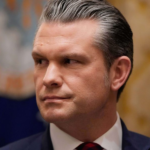High-interest rates are disrupting the efforts of climate regulators and automakers to expedite the transition to electric vehicles (EVs). This was evident on Wednesday with the termination of a GM-Honda partnership and a warning issued by a battery manufacturer.
While electric vehicle sales continue to grow robustly, the demand is not aligning with the high expectations of car manufacturers and other stakeholders who have invested substantial funds in the EV sector. The anticipation of sustained high interest rates has led companies to revise their plans, with a watchful eye on the year 2024.
“EV demand next year could be lower than expectations,” noted Lee Chang-sil, the Chief Financial Officer at South Korean battery maker LG Energy Solution, citing global economic uncertainty.

On the same day, Honda and General Motors announced the discontinuation of a $5 billion plan to jointly develop lower-cost EVs, just one year after unveiling the project. GM also disclosed its intention to focus on meeting EV demand in the near term rather than achieving specific volume targets.
GM CEO Mary Barra told analysts, “We’re taking immediate steps to enhance the profitability of our EV portfolio and adjust to slowing near-term growth.”
Investors have responded to this altered outlook. Over the past three months, the iShares Self-Driving EV and Tech exchange-traded fund has experienced a decline of more than 24%, significantly exceeding the 8.3% fall in the MSCI All-World Index, which serves as a proxy for global equities.
Despite these challenges, EV sales are still on an upward trajectory. In the third quarter, they exceeded 300,000 units in the United States for the first time, according to a report from Cox Automotive. Additionally, they increased by 14.3% in September within the European Union and by 22% in China, the largest EV market globally.
One of the key concerns in the EV industry is the impact of falling raw material prices. Tesla CEO Elon Musk recently cited the high interest rate environment as a reason for slowing plans for a factory in Mexico. He emphasized the significance of the monthly payment in the car-buying decision, which is greatly affected by interest rates.
Volkswagen, a German automaker, reduced its profit margin outlook for the year, attributing it to negative effects from raw material hedges at the end of the third quarter, some of which are used in EV batteries.
Like other industrial firms, car manufacturers hedge against fluctuations in commodity prices. With EV demand decelerating, raw material prices, particularly those used in batteries, have softened. For example, lithium prices have fallen by 67% this year, and cobalt metal prices have decreased by 20% this year and by more than half since May of the previous year.
Several automakers, such as U.S.-based Ford, have made adjustments to their production schedules and investment priorities in response to these challenges. Ford temporarily reduced a shift at the plant producing its electric F-150 Lightning pickup truck and shifted investment towards commercial vehicles and hybrids in July.
Japan’s Nidec experienced its most significant decline in over 15 years as investor concerns grew about the company’s prospects in a competitive Chinese EV market. The company now anticipates a ¥15 billion ($100 million) full-year loss in its key e-axle business, which encompasses motors, gears, and power-control electronics.
China’s CATL, the world’s largest battery maker for EVs, reported its weakest quarter since the beginning of the previous year, with a 10.7% rise in third-quarter profit due to slowing demand and intense competition. Data revealed a decline in the company’s market share in China to its lowest point in over a year, highlighting the challenges it faces from smaller competitors and weakening demand.









